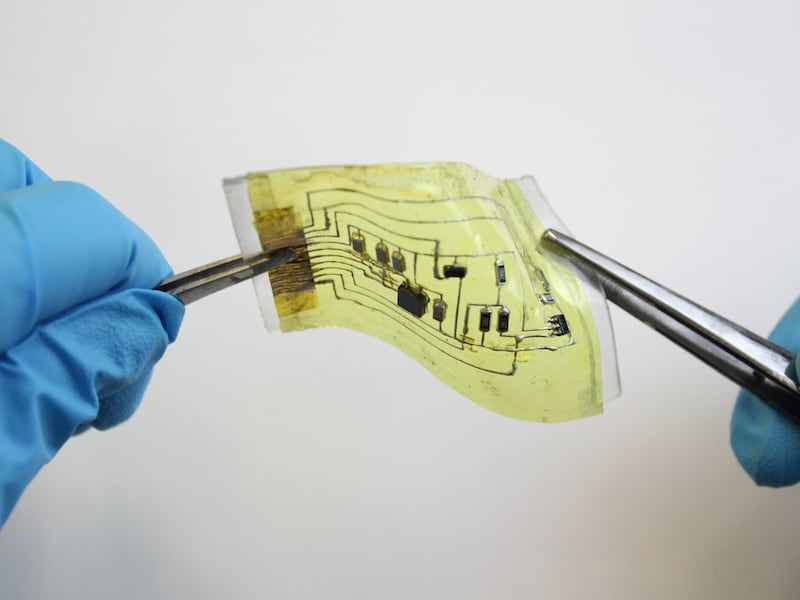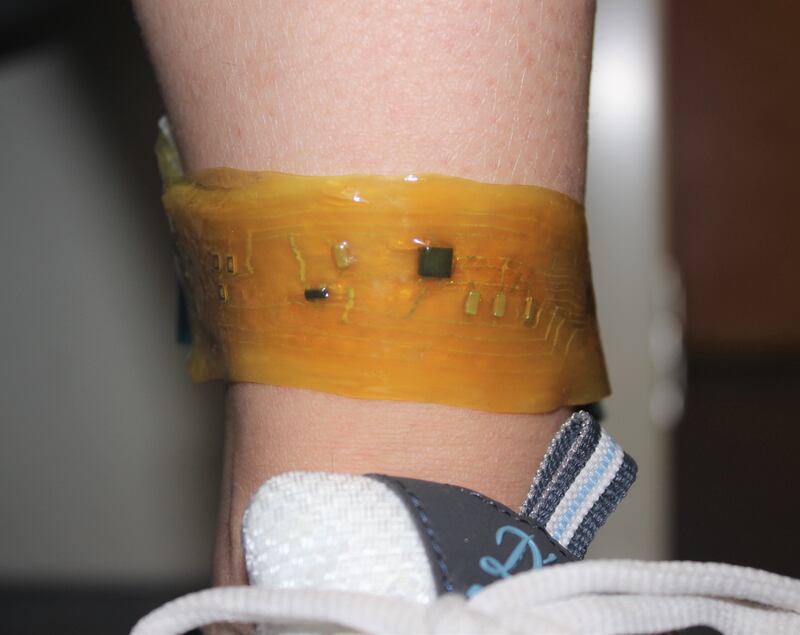Self-healing “electronic skin” that stretches into a circuit board and attaches to the human body could be a more environmentally friendly alternative to the current wearable devices, scientists have said.
Researchers at the University of Colorado Boulder in the US are developing a thin, skin-like wearable device that they say is fully recyclable and has the capability to repair itself.
The electronic skin can perform sensory tasks such as tracking a daily step count or measuring body temperature and heart rate, and can be shaped to fit anywhere in the body.
Jianliang Xiao, an associate professor at the University of Colorado Boulder’s mechanical engineering department, said: “If you want to wear this like a watch, you can put it around your wrist.
“If you want to wear this like a necklace, you can put it on your neck.”
The team said their work, published in the journal Science Advances, could lead to a future where recyclable high-tech skin allows people to collect accurate data about their bodies while cutting down on electronic waste.

It is estimated that humans will have produced more than 55 million tonnes of discarded smartphones, laptops and other electronics by 2021.
Prof Xiao said: “Our solution to electronic waste is to start with how we make the device, not from the end-point, or when it’s already been thrown away.
“We want a device that is easy to recycle.”
The researchers used a screen printing technique to create a network of liquid metal wires for the circuit.
They then used two thin films made of a self-healing material, known as polyimine, to cover the circuit.
The researchers said the resulting device is “a little thicker than a Band-Aid” which can be applied to skin using heat.
It can also stretch by 60% in any direction without disrupting the electronics inside, the team said.

Wei Zhang, a professor at University of Colorado Boulder’s chemistry department, said: “Smart watches are functionally nice, but they’re always a big chunk of metal on a band.
“If we want a truly wearable device, ideally it will be a thin film that can comfortably fit onto your body.”
The team said their electronic skin has the capability to heal itself in 13 minutes if it gets damaged, the bonds that hold together the polyimine material will begin to reform.
He said: “Those bonds help to form a network across the cut. They then begin to grow together
“It’s similar to skin healing, but we’re talking about covalent chemical bonds here.”
However, the electronic skin is a long way away from being able to compete with wearable devices in the market, one of the main limitations being it still needs an external power source to work.
Prof Xiao said: “We haven’t realised all of these complex functions yet.
“But we are marching toward that device function.”








